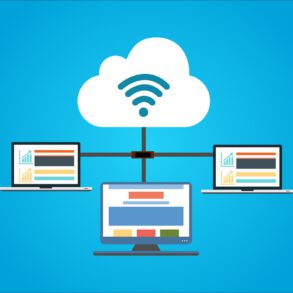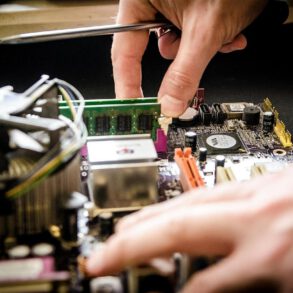Wi-Fi, though convenient, is prone to connectivity issues.
Hemera Images
Though Wi-Fi networks provide convenient Internet access, their operation relies on a number of proper settings within the access point and your computer. There are many ways, and reasons, why a computer will not connect to a Wi-Fi network. Fixing the problem begins with your individual hardware settings and ends with the wireless access point itself.
Troubleshooting the Wireless Adapter
1. Check the icon for your connection. A yellow triangle with an exclamation point indicates that a physical connection was negotiated with the Wi-Fi, but Internet service could not be found. If this is the case, begin troubleshooting the router itself. A failed network connection, however, will leave your Wi-Fi icon, located in the lower-right corner, with bars set to empty with an overlaid red “X.”
2. Check the wireless power switch. This switch is included in many laptops as a means to preserve battery power while on-the-go. This can be a switch or a button, typically labeled with a radiating antenna icon. Check the operating manual of your computer if you do not know the location of the radio power switch.
3. Disconnect and re-connect the wireless connection. This enables you to re-enter any security information that may have been improperly typed. Improperly typed codes can lead to failed connections.
4. Re-install the drivers for the wireless card. This can be accomplished by going to the wireless adapter manufacturer’s website or, in many cases, the computer manufacturer’s website.
5. Plug your computer directly into the wireless router with an Ethernet cable. If, after the previous steps, this allows you access to the Internet, then you may have a faulty wireless adapter or wireless configuration on the router. Failing to receive a connection, however, is an indication that something is wrong with the router or Internet modem.
Troubleshooting the Wireless Router
1. Log in to the wireless router through a wired connection. The login credentials, if you have not changed them, will vary from router to router and may have been set by your ISP. See Resource 1 for a list of common router access passwords.
2. Check the passcode for the Wi-Fi, if applicable, to ensure it matches the one you are entering on your computer.
3. Change the wireless channel to either 1, 6 or 11, the non-overlapping channels of the 2.4Ghz wireless spectrum. After changing the channel, try reconnecting to the Wi-Fi from your computer, before moving on to the next step.
4. Reset the router to factory defaults. This varies from one router model to the next. See the Warnings below for more information about this process.
Tip
- If your computer is connecting to the wireless, but receiving a yellow triangle, the problem may be with your Internet connection. Check the cable connections between your Internet modem and the wireless access point. Ensure that the indicator lights on the Internet modem show a healthy connection.
Warning
- Resetting the factory defaults will cause you to lose all settings within the router, including the Service Set Identifier (SSID) which other users may use to find the Wi-Fi connection. If your wireless serves multiple users, consult with these other users before making any changes to the router, and backup the configuration information if possible.




